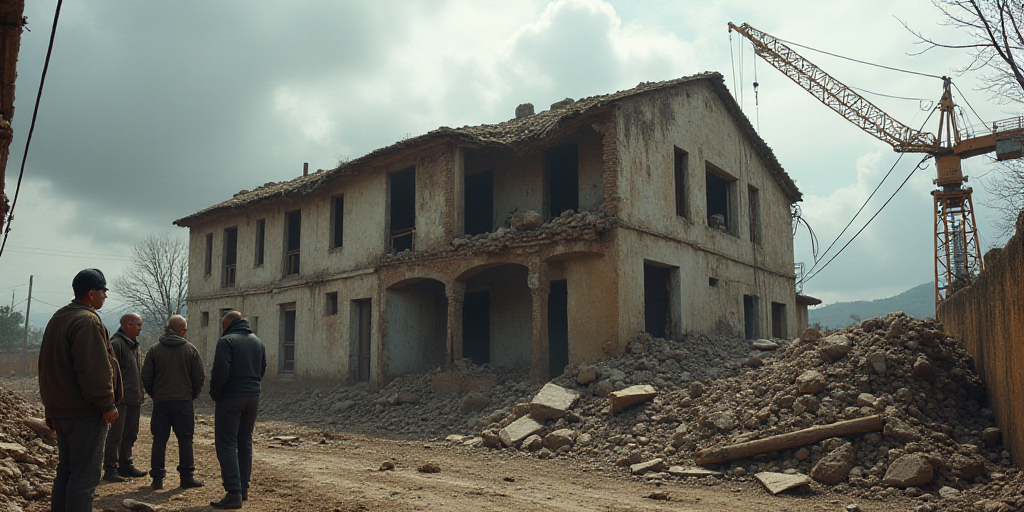Understanding the Importance of Earthquake Insurance in Mortgages
If you have a mortgage or are about to obtain one, it’s crucial to pay attention to the fine print of the earthquake insurance that is part of your financing plan. This not only prevents future headaches but also protects your financial standing in case of an unfortunate disaster.
Every year, thousands of mortgages are granted in the country, but few people pay attention to the conditions of their policy due to lack of knowledge, insufficient information, or simply overlooking it. According to BBVA’s “Housing Situation in Mexico” study, approximately 467,400 housing loans were issued in the past year, totaling an average of 1.09 million pesos across Infonavit, Fovissste, and banking institutions.
The Current State of Earthquake Insurance
Carlos Jiménez, Director of Damages and Automobiles at the Mexican Association of Insurance Institutions (AMIS), laments that only 6.5% of households have voluntary earthquake coverage on average, while 19% obtained it obligatorily through their mortgage. This means that only one in four homes in the country is protected.
“In a country where earthquakes are a constant in much of the territory, protecting our home with an appropriate insurance policy is not only a financially smart decision but also an act of responsibility towards ourselves and our loved ones,” says Javier Cercas, Director of Operations for Damages at HDI Seguros.
What Should You Review?
First, verify if you have earthquake insurance. Second, check what it covers – whether the outstanding loan amount or the property itself.
Jiménez advises that ideally, the insurer should cover up to the total value of the property to avoid significant losses. For example, if someone has a two-million-peso mortgage with only 200,000 pesos remaining to the bank and a disaster occurs, their policy covering only the outstanding loan balance would only compensate 200,000 pesos (after deductibles and co-insurance), leaving the homeowner with a loss of at least 1.8 million pesos.
Lessons from the 2017 Earthquakes
These situations arose following the 2017 earthquakes, causing significant dissatisfaction among people.
The National Commission for the Protection and Defense of Financial Users (Condusef) analyzed the role of insurance companies after September 2017’s earthquakes. Their conclusion: “Earthquake insurance functions inefficiently, even if considered as a balance-insufficient insurance policy.” In 13 out of 20 cases studied, the insurance did not cover 100% of the credit balance, leaving users without their down payment, paid installments, and property.
Condusef urged that policy restructuring should at least match the insured amount with the credit value. Additionally, for it to function as a damage insurance policy, this sum should be sufficient to settle the credit, recover the down payment, and paid monthly installments.
Jiménez added that “for this reason, it’s always important to ensure, in a mortgage, that we cover what is greater – the credit or the property value.” Initially, the loan might be larger, but eventually, the property becomes more valuable.
Therefore, two things should be considered:
- Review the insured amount annually to ensure it’s updated.
- Verify that the policy covers whichever is greater at the time of the disaster – the property value or the mortgage.
Additional Options
If you already have the mortgage and didn’t review the fine print, there are actions you can take to ensure adequate protection.
If your current contract only covers the outstanding loan balance, there are two options. First, change the policy: “I tell the insurer, I want you to cover not just the credit but also the home’s value. They adjust it, assess the risk, and provide an endorsement to cover it.”
The second option is purchasing a secondary insurance or a complement to your existing policy that covers the property value above the credit, up to the home’s value.
“This way, you protect both your credit and ensure that you won’t end up without financing and a home due to unfortunate circumstances,” Jiménez explains.
Key Questions and Answers
- What should I check regarding my earthquake insurance? Verify if you have the coverage and what it protects – your outstanding loan or the property itself.
- Why is it important to cover the greater value between credit and property? Initially, your loan might be larger, but as time passes, the property’s value tends to increase.
- What happened after the 2017 earthquakes? Many users found their insurance inadequate, as it didn’t cover 100% of the credit balance, leaving them without their down payment, paid installments, and property.
- How can I improve my current insurance coverage? Change your policy to cover both the credit and property value or purchase a secondary insurance complementing your existing coverage.






